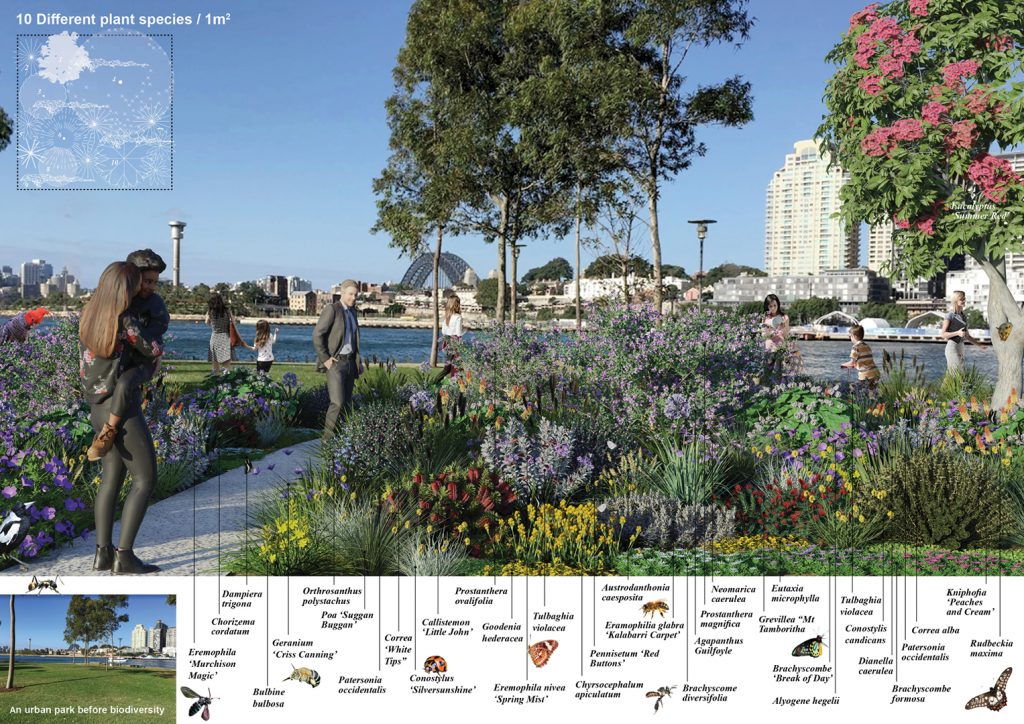Species diversity = Biodiversity and Wow
Jon Hazelwood, Michael G White
Increased biodiversity comes from complex arrangements of different plant species, not quantity of planting
There is something missing from our public spaces, and perhaps you haven’t noticed, perhaps you are suffering from ‘Plant Blindness’. Plant Blindness is the ‘inability to see or notice plants in one’s own environment’1. This blindness is exacerbated by monocultures in planting, absent of floral display, seasonal change and complexity. Research demonstrates time and time again2, that it is complexity and diversity of vegetation that drives both biodiversity and human well-being, not simply the quantum of vegetation.
Our public spaces must be more than simply ‘green spaces’, instead they must be full of diverse, natural and complex planting, not clipped and mown monocultures. Let’s look beyond active park experiences and also create the passive experience of observing wildlife, or connections to planting that will make a significant contribution to making people happier, increase well-being and physically fitter as they are drawn into our parks. Let’s consider the ‘in-between places’, the streets, gardens and disturbed industrial areas that all have should have a role to play in the biodiversity of our cities.
To increase complexity and biodiversity in our public spaces will require changes to decades-old practices, from nurseries, to maintenance regimes, and to how planting design is taught.
We propose that across Sydney, all new public planting must contain at least 100 different species per 100m2, and at least 10 species / 1m2 of planting as part of the planning process. This will guarantee a new, bio-diverse, attractive and complex dimension to Sydney’s fantastic open space network.
